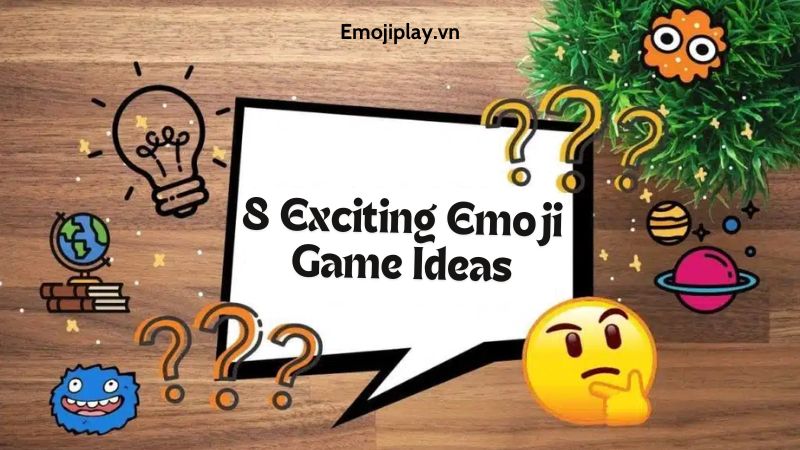Emojis have revolutionized the way we communicate in the digital age, allowing us to convey emotions and expressions that words alone often fail to capture. One such expressive emoji that has gained popularity is the “hands on head” emojIn this article, we’ll explore the meaning and usage of this emoji, its evolution over time, and how to incorporate it into your digital conversations effortlessly.
A. Brief explanation of the hands on head emoji
The hands on head emoji, 🤦♀️, depicts a person with their hands resting on their head in a gesture of frustration, exasperation, or disbelief. It serves as a visual representation of the feeling when everything seems to go wrong, and you’re left in a state of utter astonishment. This emoji perfectly encapsulates those moments when words fall short, and only an expressive icon can convey the depth of your emotions.
B. Importance of emojis in digital communication
In the fast-paced world of digital communication, emojis have emerged as a vital tool for effective expression. They bridge the gap between face-to-face interactions and text-based conversations, allowing us to infuse our messages with nuances that can be easily lost in translation. Emojis inject personality, tone, and emotion into our digital exchanges, enabling us to engage more deeply and convey our true feelings.
When it comes to the hands on head emoji, it offers a powerful way to communicate frustration, disappointment, or disbelief without resorting to lengthy explanations. With just a single icon, you can instantly convey a range of emotions, making digital conversations more relatable and engaging. Whether you’re venting about a challenging day at work or expressing disbelief at a mind-boggling situation, the hands on head emoji ensures your message hits home with clarity.
So, join me as we delve deeper into the fascinating world of the hands on head emoji, exploring its origins, variations, and ways to incorporate it seamlessly into your digital interactions. Get ready to amplify your expressive powers in the digital realm!
The Meaning and Usage of the Hands on Head Emoji

A. Interpretation of the hands on head emoji
The hands on head emoji, 🤦♀️, holds a variety of interpretations across different contexts and individuals. It primarily signifies a sense of exasperation, disbelief, or frustration. Just like when you find yourself in a situation that defies logic or leaves you feeling overwhelmed, this emoji captures that moment perfectly. It represents that universal feeling of throwing your hands up in the air, questioning the absurdity of the world around you.
B. Common situations where the emoji is used
The hands on head emoji finds its way into countless digital conversations, offering a visual expression of various relatable scenarios. It is often employed when encountering moments of blunder, like making a silly mistake or witnessing someone else’s mind-boggling blunder. Imagine the sight of a coworker accidentally sending an embarrassing email to the entire office, or when you realize you left your keys inside a locked car – these are the moments when the hands on head emoji becomes your virtual ally in expressing your exasperation.
Furthermore, this emoji is frequently used to express frustration with oneself, such as when you forget an important appointment, miss a deadline, or make an error that could have easily been avoided. It communicates that feeling of disbelief and disappointment in your own actions, as if to say, “How did I let this happen?”
C. Cultural variations in interpretation
While the hands on head emoji generally conveys a sense of exasperation, it’s important to note that cultural interpretations may differ slightly. Emojis can have nuanced meanings and connotations specific to different regions and cultures. For example, in some cultures, this emoji may also signify embarrassment or shame, while in others, it may represent a more light-hearted reaction to a comical situation.
Understanding these cultural variations can enhance cross-cultural communication and prevent any unintentional misunderstandings. It’s always wise to consider the context and the individuals you’re conversing with when using the hands on head emoji or any other emoj
In the next section, we’ll explore the intriguing evolution of the hands on head emoji and how it has transformed over time. Join me as we dive into the fascinating history behind this expressive icon!
Evolution of the Hands on Head Emoji
A. Origins and History of the Emoji
The hands on head emoji, like many other emojis, has an intriguing backstory that traces its origins back to the early days of digital communication. Emojis were first introduced in Japan in the late 1990s, where they quickly became popular in text messaging and online forums. However, it wasn’t until their integration into Unicode, the standard character encoding system, that emojis became universally accessible.
The specific origins of the hands on head emoji are not well-documented, but it is believed to have gained prominence in the mid-2000s. As digital communication evolved, so did the need for expressive icons to convey complex emotions. The hands on head gesture, universally understood as a sign of frustration or dismay, made its way into the emoji lexicon, resonating with users across cultures and languages.
B. Changes in Design and Appearance Over Time
As technology advanced and emoji usage skyrocketed, there have been noticeable changes in the design and appearance of the hands on head emojIn its early iterations, the emoji had a simpler, more pixelated representation. However, with the advent of high-resolution displays and emoji standardization, the hands on head emoji received a makeover.
Today, the hands on head emoji is depicted with a more refined, detailed design, featuring a person with their hands firmly pressed against their head. The evolution of the emoji’s appearance reflects the growing importance of emojis in digital communication and the need for visually appealing icons that accurately convey emotions.
C. Popularity and Usage Trends
The hands on head emoji has witnessed a surge in popularity over the years, becoming a staple in digital conversations worldwide. Its relatability and versatility make it a go-to choice for expressing feelings of exasperation, disbelief, or overwhelming frustration. From social media posts to text messages, the hands on head emoji has found its way into various online platforms, resonating with millions of users.
Furthermore, its popularity transcends language barriers, making it a truly universal symbol of shared human experiences. In fact, a study conducted by Emojipedia revealed that the hands on head emoji ranked among the top 50 most frequently used emojis on Twitter.
As digital communication continues to evolve, it is safe to assume that the hands on head emoji will remain a beloved and widely used symbol in expressing our exasperation and dismay. Its continued popularity is a testament to the power of emojis in enhancing our online interactions and connecting us on a deeper level.
Hands on Head Emoji Variations and Similar Emojis
A. Different skin tone options for the emoji
The hands on head emoji, like many other emojis, offers various skin tone options to promote diversity and inclusivity. You can choose from different shades ranging from light to dark to accurately represent yourself or the intended emotion. By selecting a specific skin tone, you can personalize the emoji and make it more relatable to your own identity or the person you’re conversing with.
B. Similar emojis conveying similar emotions or actions
While the hands on head emoji excels at expressing frustration and disbelief, there are other emojis that convey similar emotions or actions. For instance, the face palm emoji 🤦♂️, where a person is shown covering their face with their hand, shares a close affinity with the hands on head emojBoth emojis capture moments of exasperation and disbelief, albeit with slight variations in the physical gesture.
Additionally, the face with rolling eyes emoji 🙄 and the weary face emoji 😩 can also be used to convey similar sentiments of frustration or weariness. These emojis provide alternative ways to express your exasperation, depending on the specific context or intensity of your emotions.
C. Comparison of hands on head emoji with related symbols
While emojis have become an integral part of digital communication, it’s essential to acknowledge the symbols that existed before their advent. The hands on head emoji can be seen as a modern interpretation of the “facepalm” gesture, a physical expression of frustration or disappointment. The emoji version not only adds a visual element but also allows for more concise and universally understood communication.
Additionally, the hands on head emoji shares similarities with the “sigh” symbol (a combination of the “h” and “s” letters) used in written text to convey exasperation. However, the emoji offers a more visually impactful representation that transcends language barriers and enhances the emotional depth in digital conversations.
Join me in the next section as we conclude our exploration of the hands on head emoji, summarizing its meaning, significance, and the impact of emojis in modern communication.
Conclusion
In conclusion, the hands on head emoji, 🤦♀️, has become an essential symbol of exasperation and dismay in our digital communication landscape. Emojis, in general, have transformed the way we express ourselves, bridging the gap between face-to-face interactions and text-based conversations. The hands on head emoji, with its ability to convey frustration, disbelief, and astonishment, adds a layer of depth and emotion to our digital exchanges.
As we explored the meaning and usage of the hands on head emoji, we discovered its versatility and universal appeal. Whether you’re experiencing a challenging situation, expressing disbelief, or simply need a visual representation of your exasperation, this emoji provides a concise and relatable way to communicate your emotions.
To incorporate the hands on head emoji into your digital conversations, there are various methods available. Keyboard shortcuts and codes specific to different platforms allow for quick access. Additionally, step-by-step instructions ensure that you can effortlessly insert this expressive emoji whenever needed. And if traditional methods fail, alternative options are available to ensure you never miss out on conveying your emotions effectively.
Emojis, including the hands on head emoji, have become an integral part of our digital language. They enhance our ability to convey emotions, engage with others, and add a personal touch to our messages. So, the next time you find yourself in a state of exasperation or disbelief, don’t hesitate to reach for the hands on head emoji and let it speak on your behalf.
Thank you for joining me on this exploration of the hands on head emojKeep expressing yourself, embracing the power of emojis, and remember to visit Emoji Play for more engaging content and insights into the colorful world of emojis.










